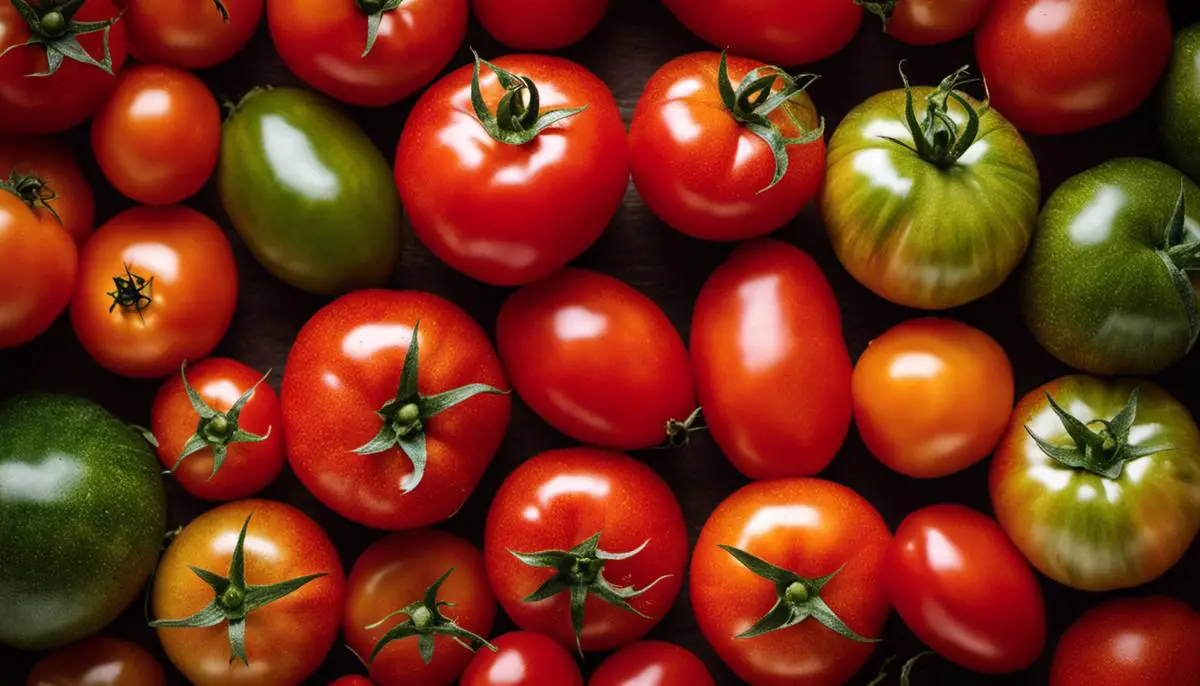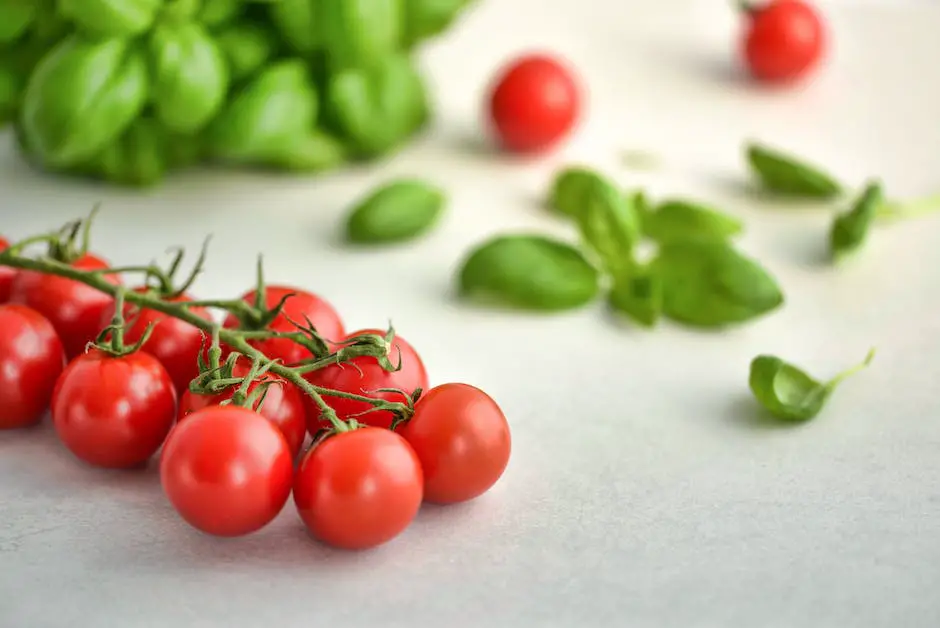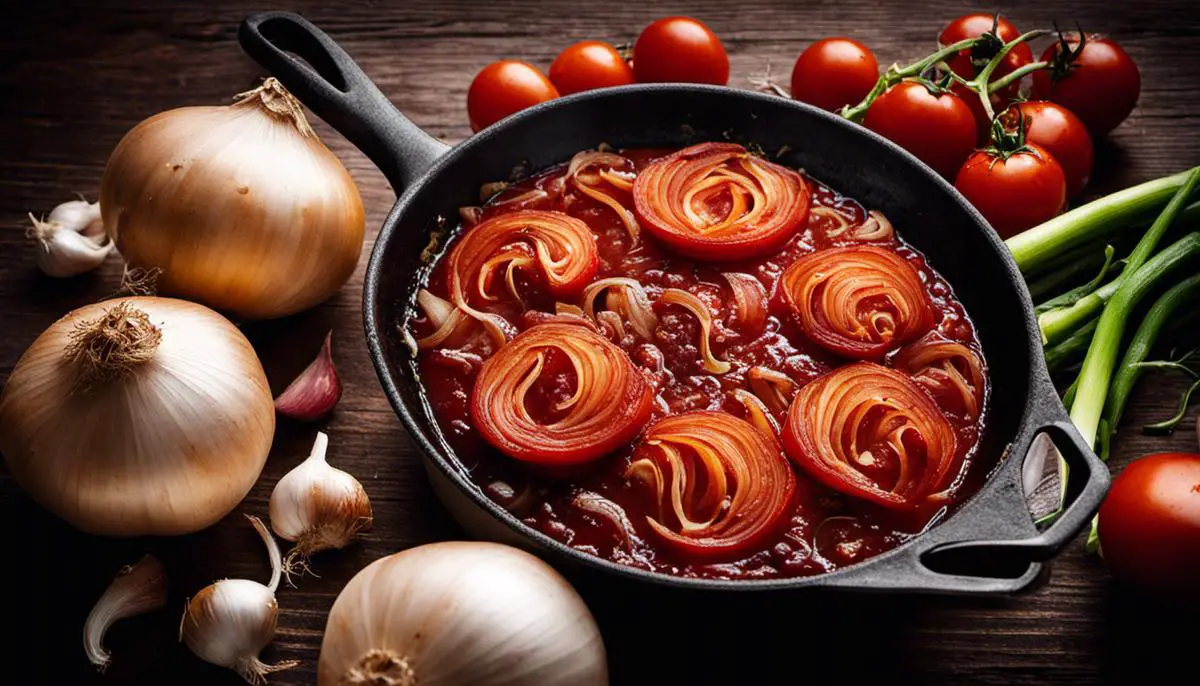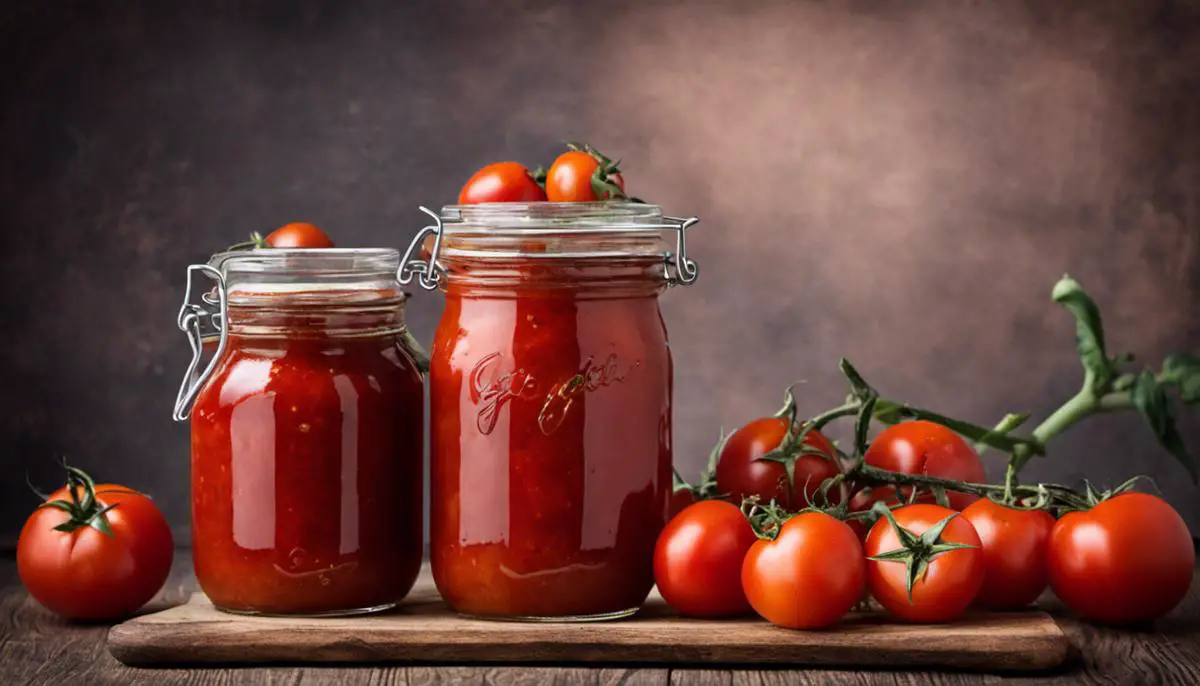Table of Contents
When you delve into the heartwarming world of homemade tomato sauce, you embark on an enchanting exploration of flavors and aromas. You start by sourcing the absolute best of natural, wholesome ingredients, particularly ripe tomatoes packed with luscious flavor. A supporting cast of fresh herbs like basil and oregano, garlic, onions and perhaps a dash of wine or sugar take the stage to elevate the taste. Not only will learning about the importance of ingredient quality make an impact on the outcome, so too will the preparation techniques. From knowing how to wash, blanch, peel and chop your ingredients to skilfully searing onions and garlic without scorching, every step makes a difference.
Selecting the Right Ingredients
Choosing Quality Tomatoes
The cornerstone of any good tomato sauce begins with selecting the right tomatoes. Look for firm, heavy tomatoes that have a slight give when you squeeze them – this often indicates they are ripe. Importantly, the tomatoes should be vibrant in color, without any bruises or blemishes, and they mustn’t have a wrinkly skin. Often, ripe tomatoes emit a sweet, earthy aroma at the stem-end, signaling freshness. Roma or San Marzano tomatoes are generally favored for sauce due to their rich flavor and lower water content.
Onions and Garlic: For Sweetness and Aromaticity
Another crucial ingredient in a homemade tomato sauce is onions. Select fresh onions that are heavy for their size with a crisp, dry outer skin. Avoid onions with soft spots or a sharp smell as they may be starting to rot. Similarly, garlic should be plump and firm, with unbroken skin. Both onions and garlic contribute a significant amount of flavor to your sauce: onions add a natural sweetness which nicely counterbalances the acidity of tomatoes and garlic adds an aromatic note that enhances the overall taste of the sauce.
Herbs: Fresh is Best
As for the herbs, fresh ones bring the best flavor. If possible, opt for a bright, fresh bunch of basil, whose sweetness will complement the other flavors in the sauce, and oregano, which adds a slightly bitter, peppery flavor with a hint of sweetness. The leaves should be vibrant and firm, without any signs of wilting. Herbs are not just secondary add-ons; they add depth and dimension to the flavor of the sauce, and different herbs subtly change the taste and complexity of the overall sauce.
Substitutions for a Taste Variation
Should any of the ingredients above be unavailable, it does not spell disaster for your tomato sauce; there are several possible substitutions. If you don’t have fresh tomatoes, canned tomatoes can be used as an alternative. Choose a product with no additional spices or flavors added. Red or white onions can be swapped out for yellow ones, and garlic powder can be substituted for fresh cloves. As for the herbs, dried oregano and basil can replace the fresh ones in a pinch. Remember, while these ingredients form the base of a traditional tomato sauce, there are numerous variations you can try, each bringing a unique twist to the classic recipe.

Preparation Techniques
Washing your Ingredients
Begin with the correct washing of your ingredients, a step crucial to any culinary process. Since tomatoes are grown close to the ground, they can be subject to a variety of dirt and bacteria. Start by rinsing them under cool running water. While doing this, rub the tomatoes gently with your hands to remove any dirt or possible residue. Be sure to also wash your hands thoroughly before and after handling the tomatoes. This ensures cleanliness and hygiene in your tomato sauce preparation.
Peeling and Chopping the Ingredients
Once properly cleaned, the tomatoes need to be peeled and chopped. Begin peeling by first removing the stem of the tomatoes. Using a sharp knife, make a shallow X-shaped incision on the bottom of each tomato that will facilitate the peeling process later. Then, proceed to chop the tomatoes. For the sauce, you want to have them chopped evenly but not minced. Uniform pieces ensure that they cook consistently, and a rough chop gives a nice, rustic texture to the final sauce.
Blanching the Tomatoes
The purpose of the X-shaped incisions come into play during blanching, a heat technique used to easily remove the peel of tomatoes. To blanch, boil water in a large pot and add your tomatoes making sure that every tomato is submerged. Leave them in the boiling water for about 30 seconds to a minute or until you see the skins starting to peel back. Then, immediately remove tomatoes from the boiling pot and soak them in a bowl filled with ice water. This quick shift from hot to cold water loosens the tomatoes’ skin, making it easy for you to peel.
Why Blanching is Essential in Sauce-Making
Blanching is an essential step in sauce-making as it allows for a smoother and more uniform texture to be achieved in your final product. As tomato skins can be tough and take longer to break down during cooking, removing them through blanching ensures that your sauce does not have any undesirable hard pieces. Moreover, the procedure also heightens the flavor of the tomatoes, allowing for a fuller, richer and more velvety sauce.
Remember, your final product will only be as good as the care and time you put into the preparation of your ingredients. Quality homemade tomato sauce lies in thoroughly washed, properly peeled, uniformly chopped, and nicely blanched tomatoes.

Cooking and Simmering
The Art of Sautéing Onions and Garlic
The first step is to peel and finely dice your onions and mince your garlic. Choose a large pan, preferably a thick-bottomed one, and heat it on medium. Add a dollop of olive oil or a combination of butter and oil, as per your preference. Once the oil is hot, place the onions in the pan. Stir the onions gently in the pan, ensuring they are uniformly coated with oil. Having your heat at medium ensures that the onions will cook evenly without burning.
Monitor the onions as they start to sweat and soften, stirring occasionally. When they become translucent, it’s time to add the garlic. Garlic cooks faster than onions, and adding it later in the process prevents it from getting overly browned or burnt. Remember to keep the heat steady, and don’t let the onions or garlic brown too quickly. The goal is to gently coax out their flavors through a slow caramelization process.
Low Heat Simmering for Flavor Development
Once your onions and garlic are sautéed to perfection, it’s time to add the tomatoes. Fresh, diced tomatoes are a great option, but you can also use canned tomatoes. Stir the tomatoes into the onion-garlic mix, and then turn the heat to low. The importance of simmering your tomato sauce on low heat cannot be overstated. This method allows the flavors from the onions, garlic, and tomatoes to blend and deepen over time, leading to a more flavorful sauce.
Add any herbs or seasonings at this point. Basil or oregano are typical choices, but you can experiment with other herbs and spices as well. Just remember, less is more when it comes to seasonings. You can always add more later during the simmering process if needed.
Finding the Perfect Simmer Time
Determining just how long to simmer your sauce can depend on a variety of factors, including personal taste. However, as a general guideline, simmering the sauce for at least 1-2 hours will substantially deepen its flavor. If possible, a longer simmer time of 3-4 hours will give an even better result.
Throughout the simmering process, remember to stir your sauce occasionally to prevent it from sticking to the bottom of the pan. Adjust the heat as necessary to maintain a gentle simmer and not a vigorous boil.
Feel free to taste the sauce at intervals during the simmering process. Not only will this give you an insight into how the flavor is developing, but it will also allow you to adjust your seasonings accordingly. This step-by-step process gives you control over your sauce and allows you to replicate or tweak the recipe in the future based on your preferences.
And there you have it! Sautéing onions and garlic, simmering on low heat, and finding the perfect simmer time are the keys to a delicious homemade tomato sauce. The process might seem lengthy, but the depth of flavor achieved is worth every minute.

Preservation and Storage
Preservation of Homemade Tomato Sauce
Preserving homemade tomato sauce requires attention to detail and specific techniques. Canning and freezing are two commonly used methods for preservation.
Canning Method
- Sterilize your jars in boiling water for 10 minutes and air-dry them.
- Pour the tomato sauce into the sterilized jars, leaving about half an inch of space at the top.
- Run a knife along the inside of the jar to remove any air bubbles.
- Wipe the rims of the jars clean before placing sterilized lids and rings on top.
- Process the jars in a boiling water bath for about 35-40 minutes.
- Remove the jars from the bath with canning tongs and let them cool at room temperature. The lids should pop as they seal.
Freezing Method
Freezing is a simpler method of preserving tomato sauce. The sauce can be stored in clean, airtight containers or heavy-duty freezer bags. Before sealing, leave some space at the top to allow for expansion as the sauce freezes. Ensure your freezer is set at 0°F or lower for proper preservation.
Storage of Homemade Tomato Sauce
The storage duration of homemade tomato sauce largely depends on the method of preservation used. Canned tomato sauce, when properly preserved, can be stored in a cool, dark place for up to a year. On the other hand, frozen tomato sauce can be stored in the freezer for up to six months while maintaining quality.
Regardless, it’s always a good idea to label your containers with the date of preparation to keep track. Also, once opened or thawed, refrigerate your tomato sauce and consume it within a week.
Thawing and Reheating
When you’re ready to use frozen tomato sauce, it’s essential to handle it correctly to ensure both safety and taste.
If you have time, the best way to thaw frozen tomato sauce is in the refrigerator. This method typically takes a few hours or overnight. For quicker thawing, use the defrost function on your microwave. But remember to stir the sauce a few times during the process to encourage even thawing and prevent it from getting too hot.
As for reheating, pour the thawed sauce into a pan and slowly warm it over low to medium heat, stirring occasionally until it reaches your desired temperature. Do not refreeze any leftover sauce that’s been thawed. Instead, store leftovers in the refrigerator and consume within three days.
By following these guidelines, you can easily enjoy your homemade tomato sauce at any time, while still ensuring its safe and tasty consumption.

Continuing your culinary journey, you’ll then perfect the balance between heat and time as you allow your sauce to simmer, encouraging the flavors to develop and combine into something truly special. Recognizing the importance of simmering duration for achieving optimum results will add yet another layer of understanding to your sauce-making repertoire. And finally, no sauce-making adventure is complete without mastering the art of preservation and storage. Whether you choose freezing or canning, learning how to safely preserve homemade tomato sauce contributes to the joy of enjoying the fruits of your labor at a later date. Embracing these insights will ensure you’ll always have a jar of delicious, homemade tomato sauce ready to enhance any dish, delivering the satisfaction only home-cooked meals can provide.
